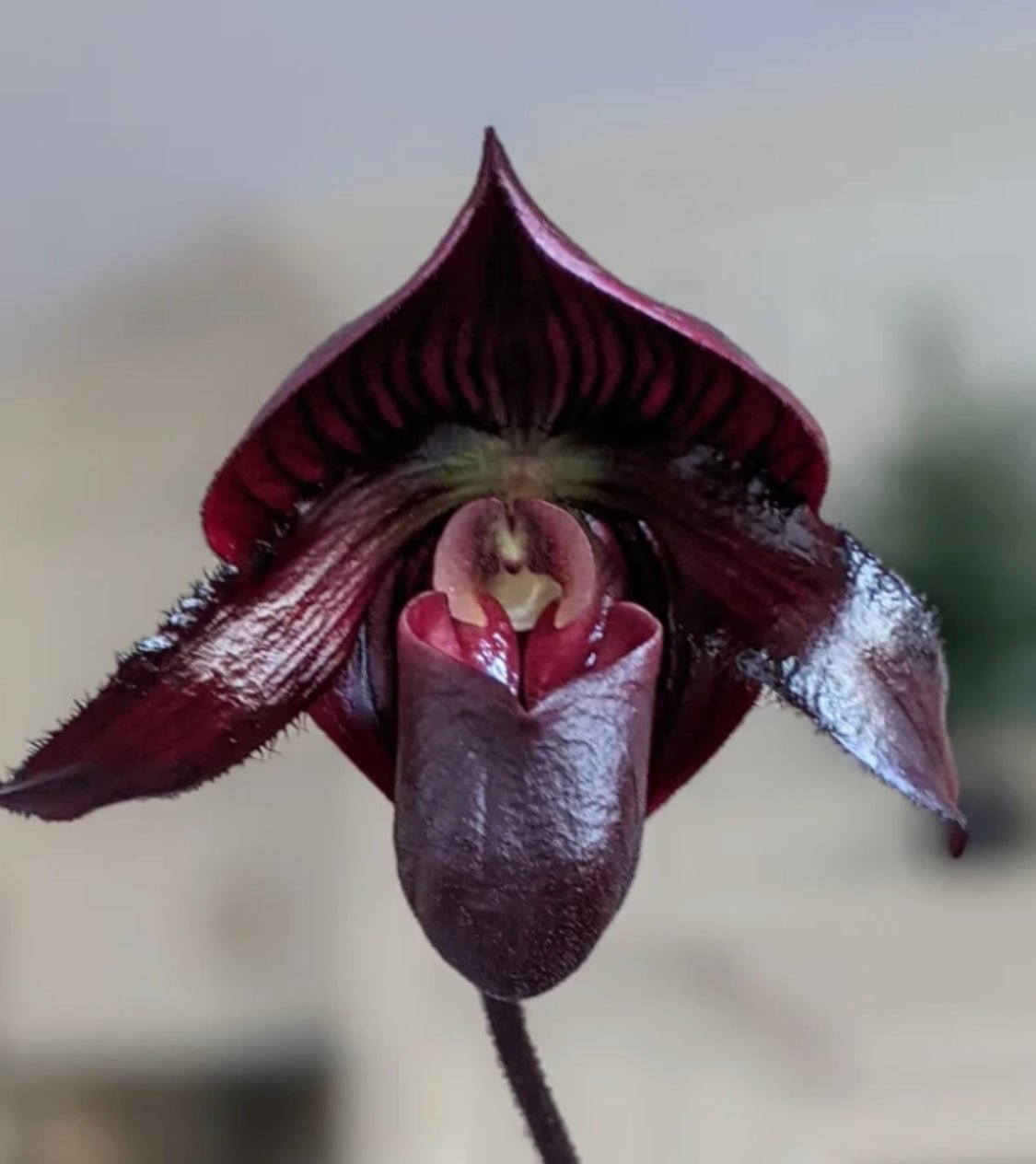The Plant Lady SF
Paphiopedilum Maudiae Hybrids
Paphiopedilum Maudiae Hybrids
Couldn't load pickup availability
These are Paphiopedilum hybrids made with different species or hybrid combinations. Each is unique, and the shapes, patterns, and colors are unusual. These plants also seem very vigorous in growth habit. Let us pick a fun one for you, or come into the shop and pick one out yourself!
General Care
Paphiopedilums are often called "slipper orchids" because of their unique pouch. They are easily grown as houseplants and their care is very similar to African Violets.
Water
How often you water will depend on whether your plant is potted in bark or a sphagnum moss mix and the amount of light and heat. Paphs need more frequent watering than some other orchids because they have no pseudobulbs to store water. Bark retains less water so will require more frequent watering - every five days is usually sufficient. If your plant is potted in moss, water when the top feels dry. Care should be taken not to overwater to avoid rotting the roots. Soon you will be able to tell by the weight of the pot whether or not it is time to water again. If in doubt, wait a day.
When you water an orchid you want to let the water run through the plant for a minute or so. Place the plant in the sink and use tepid water. Be sure to let the plant drain completely. Do not use salt-softened or distilled water.
This is a good time to look closely at your paph for any sign of insects and to remove any leaves that have browned.
Light
Paphs belong to the "low" light group of orchids. An east window is ideal; west or south windows can also be used if shaded with a sheer curtain. You can tell by the leaves if the plant is getting too much light. A reddish tinge on the edges means you need to provide more shade for your plant. If your paph does not re-bloom, it may not be getting enough light.
Temperature
Paphs generally enjoy the same temperatures that we do in the home; ideally, 60-65º F at night and 75-85º F during the day. Keep in mind that temperatures close to the window on a windowsill will be colder or hotter than your general house temperature. Paphs can be grown outside in mild climates. The plants can stand temperatures from 95°F to the 40s. Protect plants during cold temperatures by avoiding moisture on leaves or in the crowns and in summer from burning from the sun.
Fertilizer
Any balanced orchid fertilizer (look at the numbers on the container, 20-20-20, etc.) can be used to fertilize your orchid. Weakly (¼ strength), weekly works well. Once a month use clear water to flush any accumulated salts from the potting mix.
Tips
Use a shallow tray of pebbles filled with water to increase humidity around your plants. Be sure the pot does not sit in water as this will rot the roots.
Give your plants room for air to circulate around them. Crowding of plants can lead to problems with insect infestations and fungus. A small fan will help provide good air circulation around your plants.
When the blooms are finished, cut the spike down to the level of the leaves. Continue watering and fertilizing, and within a year a new growth will spike to begin the blooming cycle again!
When the plant has finished blooming is a good time to repot your orchid.
Share










